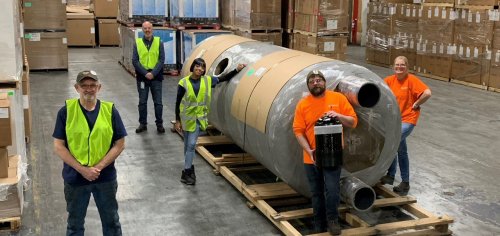Even in today’s crisis, managers can create surprisingly large profit gains by growing their profit core — selectively increasing the profitability of their current book of business. This has enormous leverage.
In most companies, 10%-15% of the customers generate 150%-200% of the reported profits, while 15%-20% of the customers erode 50% or more of these profits. The remaining 65%-75% of the customers produce only minimal profits or losses. We call the high-profit customers “profit peaks,” the large low-profit customers “profit drains” and the small minimal-profit customers “profit deserts.”
This profit segmentation is the key to growing your profit core because each segment needs a different growth game plan.
For example, if a typical company increases its profit peaks by 20%, and converts 20% of its profit drains to profit peaks, it will boost its net profits by more than 50%. This affects only 10%-15% percent of the customers.
Transaction-based profit metrics — creating an all-in P&L for every transaction line (invoice line) — are the key to profit segmentation. Today, prices and cost to serve vary widely from customer to customer, even for the same product. These metrics match each increment of revenue to the full cost of producing it. They show the profitability of literally every product purchased by every customer every time.
Financial metrics, like revenues, costs and gross margins are aggregated; they show whether a company is making money, but not where it is making money. Transaction-based profit metrics show both whether and where a company is making and losing money — in every nook and cranny of a company’s internal profit landscape.
Armed with this understanding, managers can grow their profit core in two concurrent modes: tactical improvements and strategic improvements. Tactical improvements reflect your ongoing process of bringing your customers up to your own best practice, while strategic improvements produce major, long-run changes in your customer profitability and differentiation.
Managing Your Profit Segments
Your profit peak customers are already very profitable. The key here is locking them in and growing them. For example, operating ties like vendor-managed inventory or joint category management often produce 30% or more increases in both revenues and profits, even in the highest-penetrated customers. These critical customers require a specialized multi-capability team dedicated to identifying these opportunities and managing the change.
Profit drain customers are big money losers. Most of the time, the cost of operations is the issue, not price. Transaction-based profit metrics enable you to produce an all-in P&L, which we call a “profit stack,” on each customer. When you line this up against the relevant best practice profit stack, it shows exactly which cost factor needs to be changed to reverse the profit drain. Often, this is easy to do, and is costless for both the customer and the vendor — like consolidating overly frequent orders — and it increases the profits for both parties. Profit drains are important, problematic customers. They need a very different multi-capability team that is highly skilled in reversing profit drains, analogous to a bank problem-loan “workout team.”
Profit desert customers are small but numerous. These customers require a very low cost to serve. You can accomplish this through measures like automated customer processes and highly standardized menu-based services. This segment needs yet another dedicated team of specialists, highly skilled and experienced in this process.
Tactical Profit Improvements
Imagine that you had a video of every transaction your company produced in a year. You could make a highlight “film” of your company’s best practices — the most profitable transactions. Transaction-based profit metrics allow you to do this. You can even see the specific factor — e.g. price, product mix, order pattern, sales channel/rep — which would bring each of your transactions up to your own best practice, and calculate the potential upside. These are tactical profit improvements.
Strategic Profit Improvements
Strategic improvements alter a company’s basic relationship with its customers. The profits that a company makes are determined by its customer value proposition and its cost to serve. Thus, a company can turbocharge its profits by systematically improving its customer value proposition (enabling it to capture a portion by raising its price) or lowering its cost to serve.
Tactical improvements enable a company to bring its deficient transactions up to its best practice standards. Strategic improvements, on the other hand, allow a company to improve its best practice. Here are some examples for each profit segment.
Profit Peaks
More value. Several years ago, GE made a quantum improvement to its customer value proposition in its aircraft engine business. In the past, the company sold engines, parts and services separately. Its innovation was understanding that what the customers actually wanted was well-functioning aircraft power. In response, they packaged their capabilities and offered “power by the hour,” which was hours of well-functioning aircraft power.
This changed the strategic paradigm of the industry. GE differentiated itself by aligning directly with its customers’ needs. Most of its competitors were niche providers, and few could compete directly with GE’s comprehensive new offering. Profits soared.
Less cost. Adrian Enterprises, a disguised company that sells process flow control devices, had two main customer segments: university laboratories and suppliers to semiconductor fabs. The company’s sales reps favored the university laboratories because they had high gross margins, while the semiconductor supplier segment had low gross margins.
The company used transaction-based profit metrics to analyze its business. Its managers were surprised to find that the university laboratory segment actually had moderate profits, while the semiconductor supplier side was very profitable. The reason was that the university laboratory sales were very fragmented: Every order was for a different experiment, and most required several hours of engineering support.
The semiconductor suppliers were completely different. Their products were input into standard processes, with predictable demand and no need for technical support. When the managers saw this, they increased sales to the semiconductor supplier segment. They also thought hard about the university laboratory segment, and realized that they could train a set of low-cost graduate students to be “product representatives” who could provide the technical support the researchers needed, and even serve free pizza. Profits flowed.
Profit Drains
More value. Nalco had two problems: The company sold commodity chemicals for water treatment systems, and its customers were geographically scattered. Competitive pressures kept prices low, and the company was plagued with unpredictable orders with costly deliveries. In order to lower its delivery costs, Nalco installed in its customers’ chemical tanks wireless sensors that it could monitor. This allowed the company to supply product when tanks ran low instead of reacting to customer orders. This reduced cost. Soon, the company realized that it could use this information to schedule its production. Costs plummeted.
In conversations with customers, Nalco’s engineers figured out that they could read the draw-down of chemicals in a customer’s water treatment system, compare it to the system’s standard, and determine whether the system was operating efficiently. If they saw a problem, they would alert the system’s managers. The cost of a malfunction in a major customer like a municipal water treatment system could cost millions of dollars, dwarfing the cost of Nalco’s chemicals. This provided solid differentiation, and once Nalco installed its sensor and linked with the customer’s engineers, competitors were frozen out. Profits rose rapidly.
Less cost. Taggart Brothers, a disguised consumer appliances retailer, had a problem. Some stores were very profitable, but many others were profit drains. When a manager team used transaction-based profit metrics to look into this, they found that most of the profit drains occurred in the last quarter of the product lifecycle in the quartile of stores with the smallest sales volume. They assumed that the problem was high markdowns.
In fact, the transaction-based profit metrics showed a very different cause: The store managers had very high end-of-season stock levels, and did not want to take large markdowns. Instead, they kept the old goods on the shelves, and failed to replenish with the new products during the critical introductory period.
The answer was obvious. The warehouse had been replenishing stores based on historical demand until it ran out of product. The answer was to cut the replenishment of the low-volume stores first, then the mid-volume stores, and finally the high-volume stores. This painless improvement turned the profit drains into profit peaks.
Profit Deserts
More value. SKF Bearings had a large, underperforming business selling undifferentiated bearings to the aftermarket. When they looked carefully, they saw that they had two distinct segments: machines and automobiles. They determined that the machine customers’ real problem was minimizing machine downtime, and that the bearing’s cost was a small proportion of overall cost. They developed maintenance kits with instructions and products like sealants that would prolong bearing life.
The automobile customers’ biggest problems were locating the correct bearing for the job and obtaining needed tools and instructions. The company developed a variety of kits for specific applications and vehicles. The kits contained instructions, tools, bearings and other necessities. The company’s profits climbed in both customer segments.
Less cost. Craft beer is a hot product with strong sales and high gross margins. When one distributor’s managers used transaction-based profit metrics to look at its business, they were astonished to find that the company’s volume brands (e.g. Budweiser, Miller) had low gross margins but high profits, while the craft beers had high gross margins but significant losses.
The team thought the problem was that they delivered daily to large retailers. But when they looked closely at their transaction-based profit metrics, they saw that the real problem was caused by their small customers (e.g. the neighborhood grocery stores). These customers were ordering frequently.
The volume brand orders had enough gross margin dollars to pay for the picking and delivery, but the craft beer orders were too small to pay for the shipments’ variable cost. When they asked the sales manager why the customers were ordering so often, he replied that he was compensated on the number of orders each day, so he instructed his sales reps to take frequent orders — and each order required a delivery.
This was driving the craft segment into un-profitability. When they started taking orders weekly, the losses turned into big profits.
Three Steps to Growing your Profit Core
Growing your profit core is always a company’s most important objective — but in today’s pandemic crisis it is life or death. Managers can accomplish this in three steps.
- Uncover your profit opportunities by installing transaction-based profit metrics. This will show the all-in profitability of every product in every customer every time, which you can aggregate into any company dimension (customers, products, processes).
- Develop a systematic, ongoing program to identify and prioritize your tactical profit improvements.
- Create strategic profit improvements by deploying “showcase” teams into representative profit drain, profit peak and profit desert customers. A showcase is an opportunity to explore a customer situation over a few weeks, scouting for opportunities to make quantum profit improvements in your value footprint or cost to serve.
In this way, you can grow your profit core. You are either growing it, or exposing it to competitor erosion. The only way to really secure your profit core is to actively grow it. Profit segmentation, rooted in transaction-based profit metrics, is the heart of this process.
Jonathan Byrnes is a senior lecturer at MIT, and founding chairman of Profit Isle. Co-author John Wass is CEO of Profit Isle, a profit acceleration SaaS company with proprietary analytics that have produced sustained 10%-30% year-on-year profit increases on tens of billions of dollars of client revenues.They are co-authors of the forthcoming McGraw Hill book, ”Choose your Customers: How to Compete Against the Digital Giants and Thrive.”Sales and Marketing
Related Posts
-
The company reported an operating loss of $115.8 million.
-
Industrial & Flow Technologies sales were down 3% compared to sales for the same period…
-
For the first six months sales decreased 5% to $8.3 billion.





